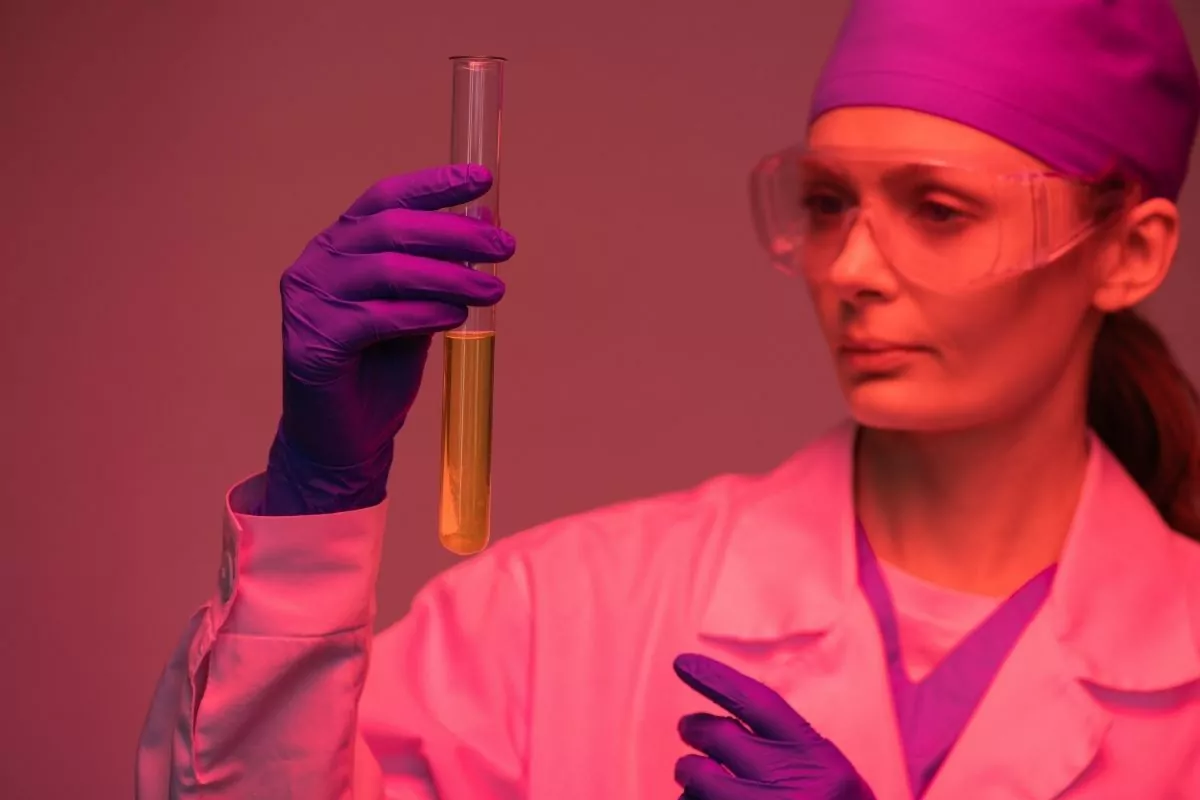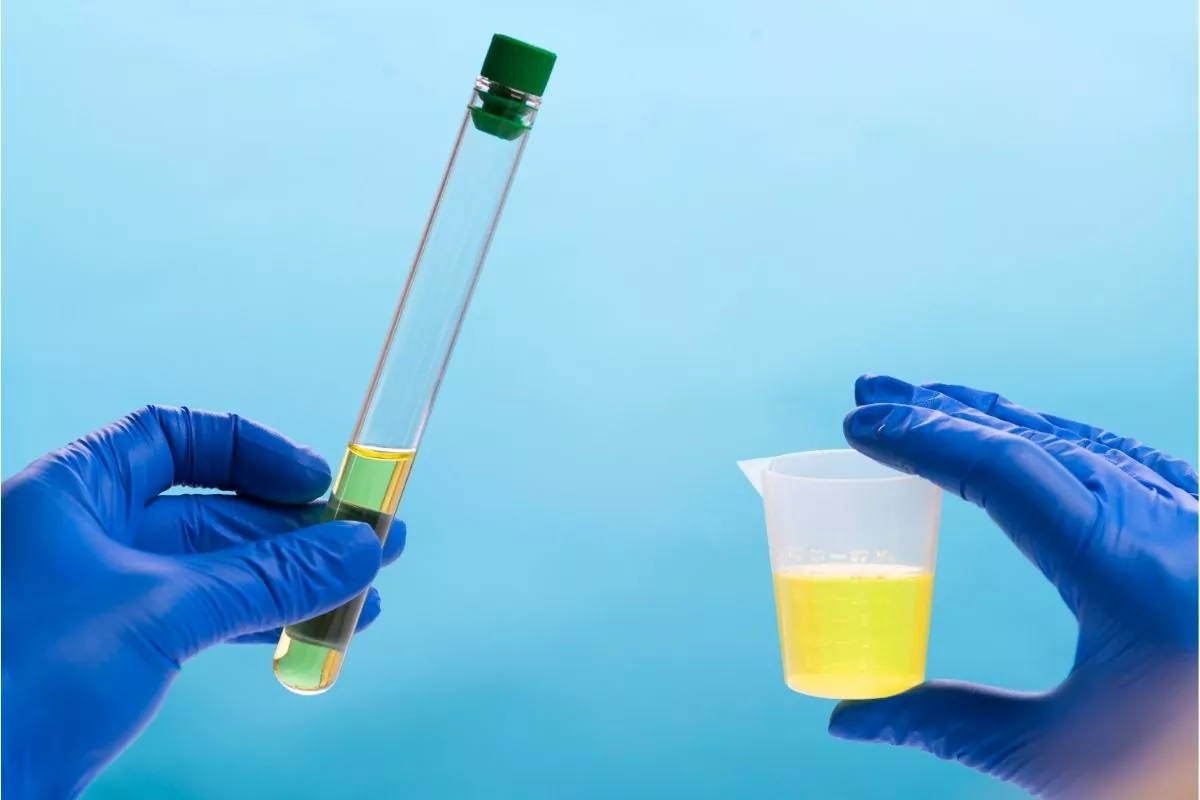Urinalysis for Cats
How to get a urine sample from a cat is a question that pet owners may ask at some point. It isn’t always simple, but there are options. We’ll show you how to acquire a urine sample from your cat in this post.
We will also discuss why getting a urine sample from your cat is important and what the benefits of doing so are. Finally, we’ll offer some suggestions for keeping your cat calm during the process.
Let’s get started!

What Do You Need to Perform a Cat Urine Test?
What you need for a cat urine test will depend on what kind of test it is. If they are testing for crystals in a more complex way, then they might need some more. If your vet just wants to do a basic protein/blood/urine test, they might only need the following:
Basic Collection
You need:
- Urine test tube or collection cup, preferably with a lid or cover to keep from spilling/splashing (your vet can provide one).
- 15-20 ml of warm water: If your vet wants the sample given at room temperature, they will tell you to use room temperature water.
- 15-20 ml of saltwater solution- 1 tbsp. salt per quart (0.95 liters) of water: If your vet wants the sample given at room temperature, they will also tell you to use room temperature water and add the salt water. If they want it cold or hot, they will tell you which to use and can handle it.
- Vet wrap: The kind with only fabric hook & loop, no adhesive on it (your vet can provide this if needed).
Optional:
A cold pack or ice pack is placed in a plastic bag. If using an ice pack, you will need to bring a zipper-seal bag to keep the ice pack from leaking during transport (your vet might tell you that they need this, or it will depend on the lab doing the analysis).
How to Get a Urine Sample from a Cat
Have you ever wondered how do vets get urine samples from cats? To test your cat’s urine, a small urine sample needs to be obtained. This can be accomplished in several ways:
- Cystocentesis: a needle into the urinary bladder and draws out the urine.
- Urine collection device: A tube fitted with a cotton ball at the end is put into the urinary opening, and urine collects in it.
- Bladder expression: Putting pressure on the bladder through the skin to force out urine.
- Baby catheter: Insert a tube about one in. long into the urinary opening, then inflate a tiny balloon at the end of this tube with sterile saline.
How to Get the Best Results From a Cat Urine Test
You need to do urinalysis for cats, but getting an accurate reading requires some know-how. The following are some tips on how to get the best results from a cat urine test:
- When testing your cat’s urine, you will need several things to get accurate results. First, you will need to catch your cat’s urine in a clean container. You should collect the first bit of urine produced after your cat wakes up or drinks some water. If there are other cats in your household, it may be best to test each individual for accuracy.
- Clean the inside of the container with bleach to kill any germs. Next, wash your hands thoroughly with soap and water. Then wipe the inside of the container with rubbing alcohol, allow it to air dry, or use a hairdryer on low heat.
- To test for UTI (urinary tract infection), you will need to purchase an all-in-one dip strip that tests for leukocytes, nitrites, blood, and glucose, or you can buy an individual reagent for each test. The all-in-one strips are the least expensive option but give less accurate results. The best bet is to get a 2-pack of each type that way, you have one for backup if you need it.
- Urine can turn bad in as little as 24 hours, so you mustn’t test the urine more than once. Instead, pick up a small sample of fresh, warm cat urine with an eyedropper or disposable stick for dropping urine into the container.

Why is an Actual Urine Sample From Your Cat Needed?
A fresh urine sample is required to avoid chemical changes when the urine is exposed to air. All chemicals used in the litter, including enzymes and deodorizer tests, will interfere with the results if they are present in the sample.
The litter may not be the only cause of false positive or false negative results because chemicals used in food (as preservatives) can affect the results. In addition, not all chemicals used in cat litter or food are labeled with specific names and content percentages.
In other words, when a person asks you how to get a urine sample from a cat, they’re asking if they can have a sample of the urine that is currently in the bladder of your cat.
How to Make a Cat Pee
Cat peeing on the floor is never a pleasant experience, but if you need to test your cat’s urine, it may be one of those unfortunate events. A normal, healthy cat has an instinct not to use its litter box if something is wrong with them or its environment.
It’s essential to know how to make a cat pee. This can be the best way to get the sample you need for your cat’s urine test.
Here are some tips on how to make your cat pee in a specific location, giving you the chance to get the sample you need to take your kitty to the veterinarian:
- For starters, place two litter boxes side by side in an easily accessible area of your home. Try to get litter boxes with low sides to make it easier for your cat to access the litter box. If you have more than one cat, place at least two litter boxes next to each other.
- Clean both the litter boxes and the surrounding areas until they are spotless and odor-free.
- Fill both litter boxes with fresh, unscented litter. Although you may think your cat would prefer one type of litter over the other, cats are known to not stick with a specific type of litter for too long. If you have multiple cats, place each cat’s unique kind of litter in its separate litter box to prevent any issues.
- Place both litter boxes next to each other with the sides touching. If your cat can quickly jump across both boxes, you might need to place them closer together until they can access the litter box with ease.
- Place fresh, small pieces of your chosen type of tuna fish on one side of the litter box and fresh, small pieces of your chosen type of sardines on the other side.
- Let your cat choose which litter box to use first. Try wet cat food instead if you do not have any tuna or sardines on hand.
- Once your kitty has used the litter box, simply pick it up without scooping out any waste and put it in a bag.
Cleaning up Cat Peeing Accidents
No one likes to come home after a long day of work and smell their cat’s urine all over the place. But, like humans, some cats occasionally have accidents.
The culprit is usually territorial marking or medical issues, but no matter what the reason for your cat’s accident is, there are ways to resolve it. There are also steps you can take to prevent it from happening again.
Cleaning Cat Urine
Cleaning the area as thoroughly as possible is the first step. The urine may have already dried, which will make it more difficult to remove.
You’ll want to use an enzymatic cleaner specifically designed to break down and eliminate these types of odors on contact. This way, the smell won’t just come back after the area dries.
Most cleaners will tell you that they aren’t a masking agent and won’t cover up the smell but work to eliminate it. If your cat can still pick up on the scent of their urine in the area where they peed before, they might continue to go there or in a similar spot.
You’ll also want to clean the entire area where the accident occurred, not just the stain.
If multiple areas of cat urine need cleaning, it might be best to clean them one at a time. Thoroughly cleaning all these areas will help eliminate the smell completely but can become overwhelming if you try to accomplish too much at once.

How to Prevent Your Cat From Peeing Before a Vet Visit
If your cat gets nervous before a visit to the vet, one of the things that they may do is pee. Unfortunately, this can be fatal if your cat is on any kind of medication for an ongoing condition.
Visit Your Vet at Least Once a Year
If your cat has never visited the vet, this will not apply to you since they haven’t experienced the traumatic event of being put into a carrier and being conveyed to the vet. However, If your cat has experienced this before, then it’s time to take some precautions.
Make Sure Your Car is Clean Inside
If your cat urinates in the carrier, it doesn’t matter if you put a blanket inside or use one of those “pee-proof” accessory carriers.
If your cat urinates, it will soak through and ruin your upholstery. To avoid this, line the carrier’s interior with a plastic bag before putting any blankets or accessories in.
Buy a New Carrier, if Possible
This is not always an option, though, so if it isn’t, don’t worry. Make sure your carrier is big enough for your cat to stand and turn around in. This will make their experience much more positive since they won’t feel stuck.
Prepare the Carrier at Least a Few Days Before You Leave or Take Them to the Vet
One of the worst experiences for a cat is being confined and not knowing what’s going on. So make sure you prepare them by letting them play in it and giving them treats inside of it at least three days before your trip to the vet.
Summary
Urine is an integral part of a cat’s health and can diagnose various diseases. There are several ways to get a urine sample from a cat, but the most common way is by using a method called cystocentesis. Urine can also be collected by coaxing the cat to urinate into a container. This is not as accurate as cystocentesis, but it can be done if necessary.
